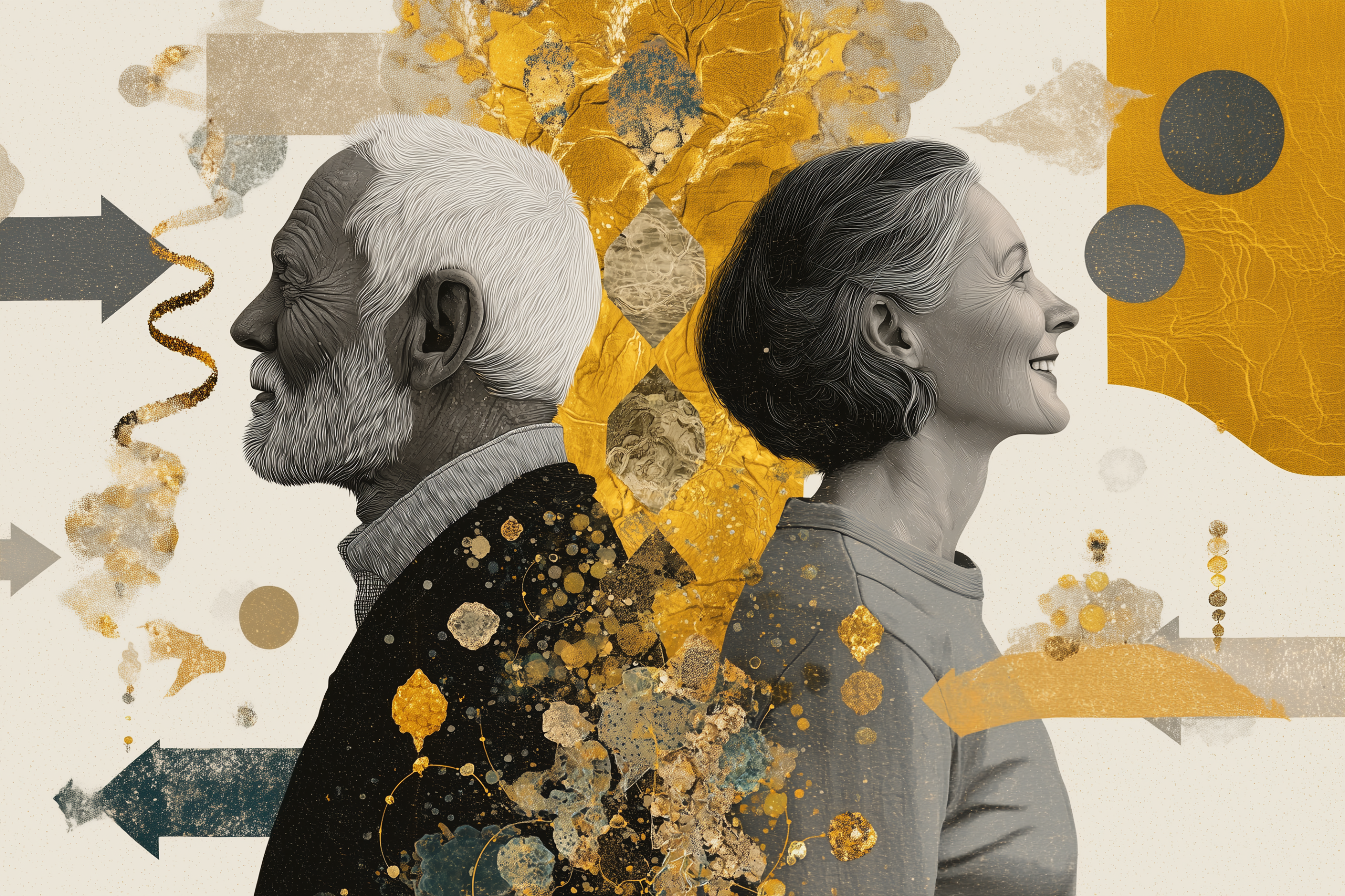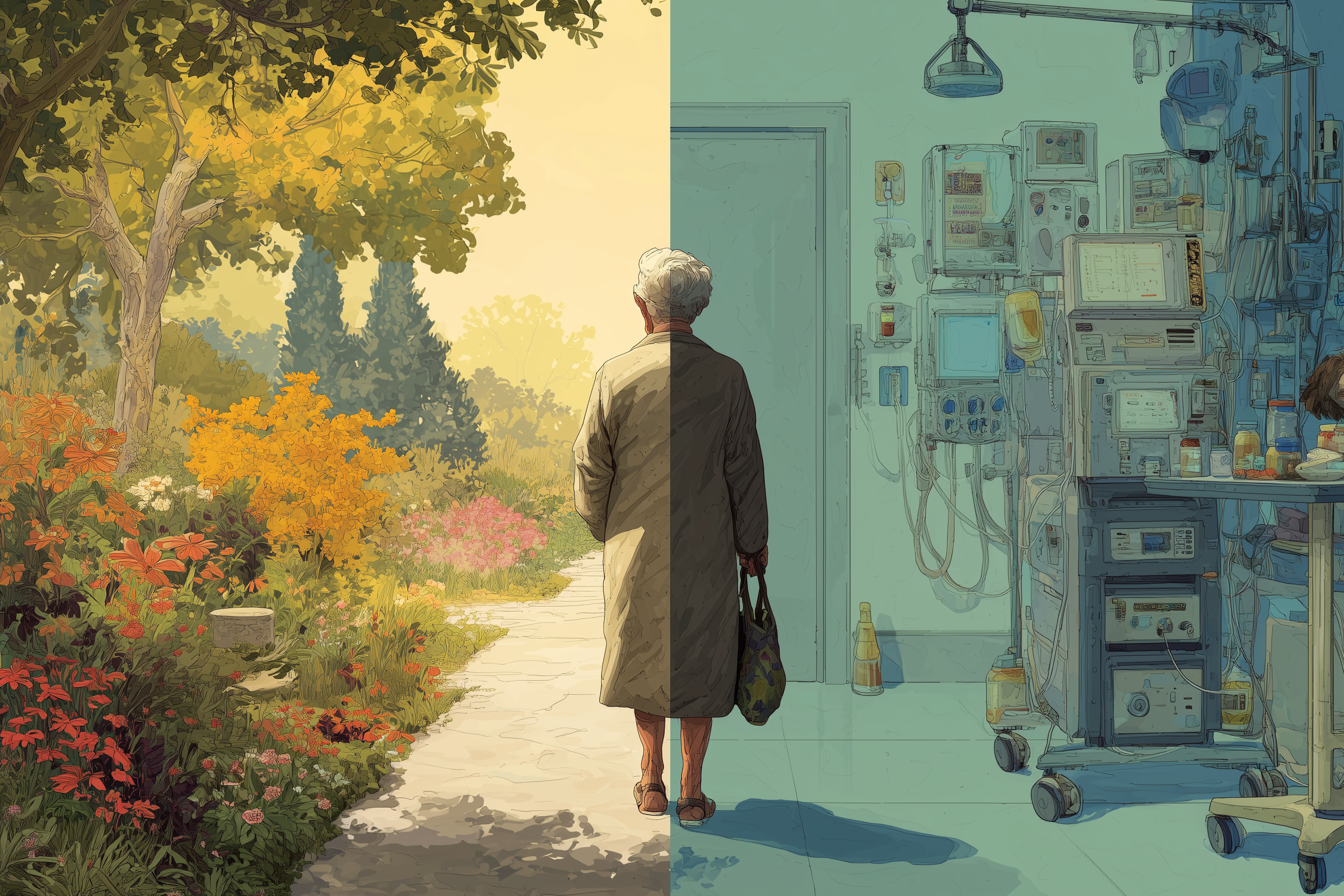Your biological age might be 45, but your cells think they’re 60. AI can now help you understand why and what to do about it.
Note: This article is for educational and informational purposes only. See full disclaimer at the end.
Most people count their age in birthdays, marking the passage of time with candles on a cake. But inside your body, a different clock is ticking—one that doesn’t care about calendar years.
This biological clock, written in the chemical modifications of your DNA, tells the real story of how fast you’re aging. And for the first time in human history, we can not only read this clock with precision, we’re learning how to turn it back.
The convergence of artificial intelligence and longevity science isn’t just another Silicon Valley promise. It’s happening in laboratories and clinics right now, transforming aging from an inevitable decline into a negotiable biological process.
While yesterday’s family dinner conversations from Day 93 showed us how longevity multiplies through households, today’s AI-driven tools are revealing something even more profound: aging isn’t uniform, it isn’t predetermined, and increasingly, it isn’t permanent.
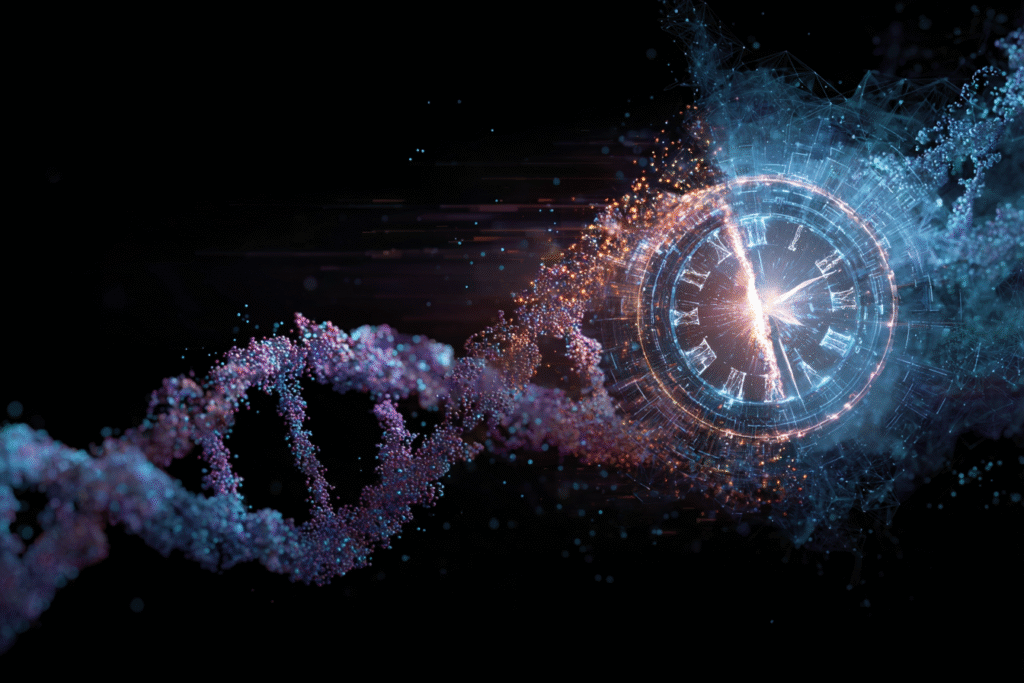
The Language Your Body Speaks
Consider this: every cell in your body carries a timestamp. Not the date you were born, but a complex pattern of chemical markers that accumulate like rings in a tree trunk. These epigenetic modifications—tiny methyl groups attached to your DNA—create what scientists call an “epigenetic clock” [1].
Dr. Steve Horvath, who pioneered this field at UCLA, explains it simply: “Some of these changes protect us, but others can lead to adverse consequences” [4]. His GrimAge test (yes, named after the Grim Reaper) can predict not just how old your cells are, but how much time you likely have left—with uncomfortable accuracy.
What makes this revolutionary isn’t the test itself—it’s what happens when you feed this data to artificial intelligence. Machine learning algorithms can now identify patterns in your biological aging that no human could spot, comparing your cellular signatures against millions of data points to understand not just where you are, but where you’re heading [5].
The Multiplication Effect of Data
Here’s where technology transforms from interesting to essential: AI doesn’t just measure aging—it learns from it. Every person who takes a biological age test, every continuous glucose monitor reading, every sleep pattern tracked becomes part of a massive learning system that gets smarter with each data point [7].
Think about what this means. The blue zone centenarians we discussed in Day 92—those individuals living past 100 in Sardinia and Okinawa—represent perhaps a few thousand data points collected over decades. But a single continuous glucose monitor generates 288 readings per day [12]. Multiply that by millions of users, add in epigenetic tests, wearable data, and medical records, and suddenly AI has more information about human aging than all previous research combined.
This isn’t hypothetical. The National University of Singapore and Rostock University Medical Center recently demonstrated that when AI systems are given proper guidelines about aging mechanisms, they can provide “more accurate and detailed insights” into interventions than traditional analysis [6]. They tested this with real medications and supplements, finding that AI could not only evaluate efficacy but predict individual responses.
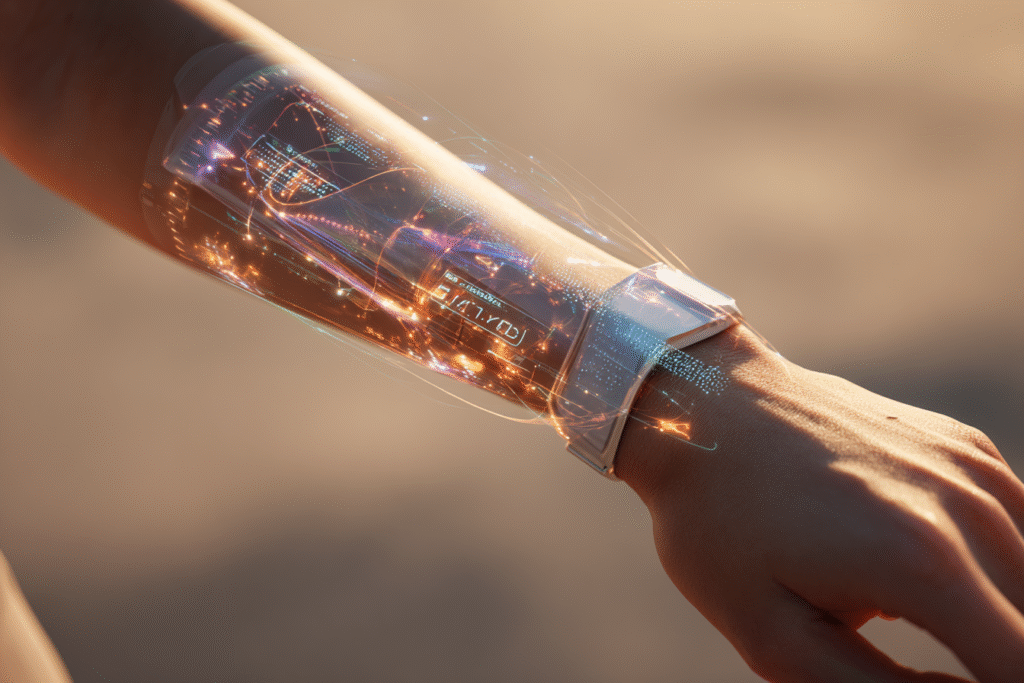
The Clock That Oscillates
Here’s something that might surprise you: your biological age changes throughout the day. Research published in Aging Cell found that epigenetic age predictions display a 24-hour periodicity [3]. In one 30-year-old individual studied, their mitotic age varied by more than 35% from morning to night.
This discovery reveals why single-point measurements—whether blood tests or even sophisticated epigenetic clocks—tell only part of the story. It’s like trying to understand the ocean by looking at one wave. But continuous monitoring changes everything. When AI can track thousands of biological signals continuously, patterns emerge that were invisible before.
Beyond the Millionaire's Playground
Let’s address the elephant in the room: doesn’t all this technology require Bryan Johnson’s $2 million annual budget? Actually, no. The democratization of longevity technology is happening faster than most people realize.
Consider continuous glucose monitors (CGMs). Once prescription-only devices for diabetics, the FDA recently approved the first over-the-counter CGM [8]. The Dexcom Stelo, TIME magazine’s best over-the-counter glucose monitor of 2024, costs less than a monthly gym membership [13]. It provides the same type of metabolic insights that longevity clinics charge thousands for.
Or take GrimAge testing. What once required a research lab now costs about the same as a comprehensive blood panel [10]. The real revolution isn’t in the hardware—it’s in what AI does with the data.
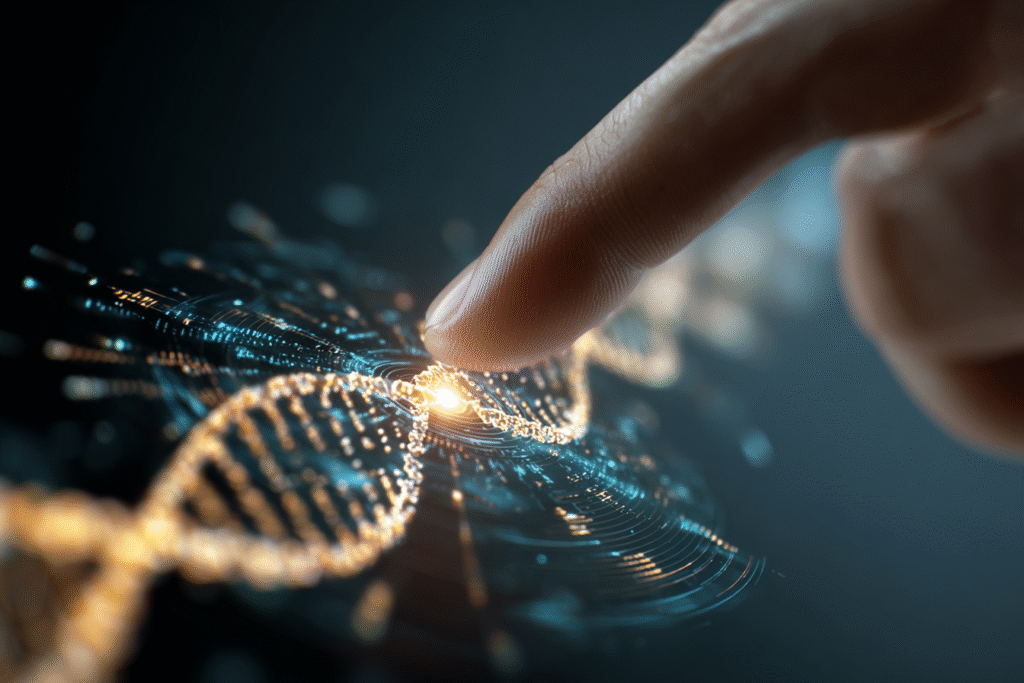
The Intervention Engine
This is where artificial intelligence transforms from observer to advisor. Modern AI systems don’t just tell you your biological age; they can predict which interventions will work for you specifically [11].
The process works like this: AI analyzes your biological markers, compares them against vast databases of intervention outcomes, and identifies which changes are most likely to reduce your biological age. Not generic advice—personalized protocols based on how similar biological profiles responded to specific interventions.
For instance, research from Aging Research Reviews shows that AI can now design clinical trials, tailor health recommendations to each person, and predict treatment responses based on genetic profiles [5]. This isn’t about following a one-size-fits-all protocol; it’s about finding what works for your specific biology.
The Analog Foundation
But here’s the crucial insight that technology evangelists often miss: all this AI power amplifies rather than replaces fundamental practices. Remember the family dinner table from yesterday’s article? The daily walks from Day 92? The morning sunlight exposure that affects mortality as much as smoking cessation?
AI’s greatest contribution isn’t creating new interventions—it’s showing us which simple practices work best for our individual biology and helping us stick to them. When your continuous glucose monitor shows that your grandmother’s traditional breakfast keeps your blood sugar more stable than the latest superfood smoothie, that’s AI validating ancient wisdom with modern precision.
The Privacy Paradox
Of course, feeding our most intimate biological data to AI systems raises obvious concerns. Research has identified significant security weaknesses in CGM transmitters and wearable devices [9]. The Diabetes Technology Society has established new security standards, but the fundamental tension remains: the more data AI has, the better it can help us—but the more vulnerable we become.
This isn’t a problem technology alone can solve. It requires conscious choices about what we’re willing to share, with whom, and under what conditions. The good news is that much of the benefit comes from pattern recognition rather than absolute values. You don’t need to broadcast your biological age to the world to benefit from AI’s insights.
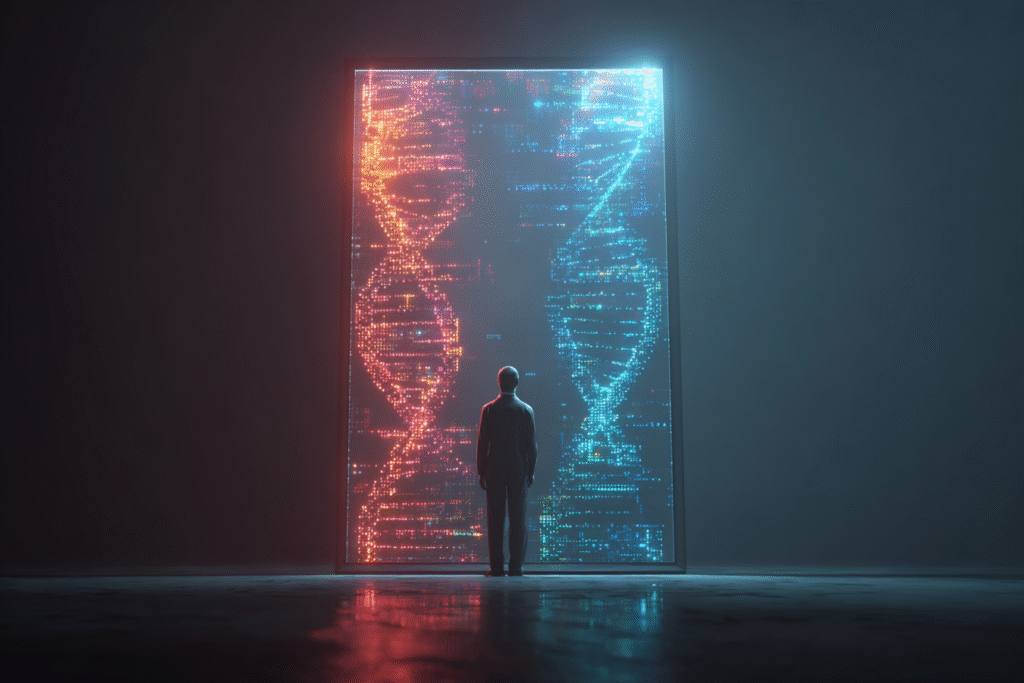
The Reversal Revolution
Perhaps the most profound shift is this: we’re moving from measuring aging to reversing it. The latest epigenetic clocks don’t just track decline—they can detect improvement [2]. Brigham and Women’s Hospital researchers created “DamAge” and “AdaptAge” clocks that separately track damaging and protective changes, allowing us to see not just if we’re aging, but which direction we’re heading.
This bidirectional measurement changes everything. It means we can test interventions in real-time, seeing within weeks or months whether a protocol is actually reversing biological age. No more waiting decades to see if something worked—AI provides near-immediate feedback on whether you’re moving in the right direction.
What This Means for You
So what do you actually do with this information? You don’t need to immediately purchase every device or take every test. Start with understanding that your biological age is both measurable and malleable. The conversation has shifted from “How long will I live?” to “How fast am I aging, and what can I do about it?”
If you’re curious about your biological age, tests like GrimAge are available directly to consumers. If you want to understand your metabolic health, over-the-counter CGMs provide restaurant-level insights into how your body processes food. But remember—these tools amplify good practices; they don’t replace them.
The families gathering around dinner tables, sharing meals and multiplying their longevity practices from yesterday’s article? They’re not obsolete. They’re the foundation that technology builds upon. AI doesn’t replace the need for movement, sunlight, connection, and purpose. It helps us understand which of these interventions matter most for our individual biology.
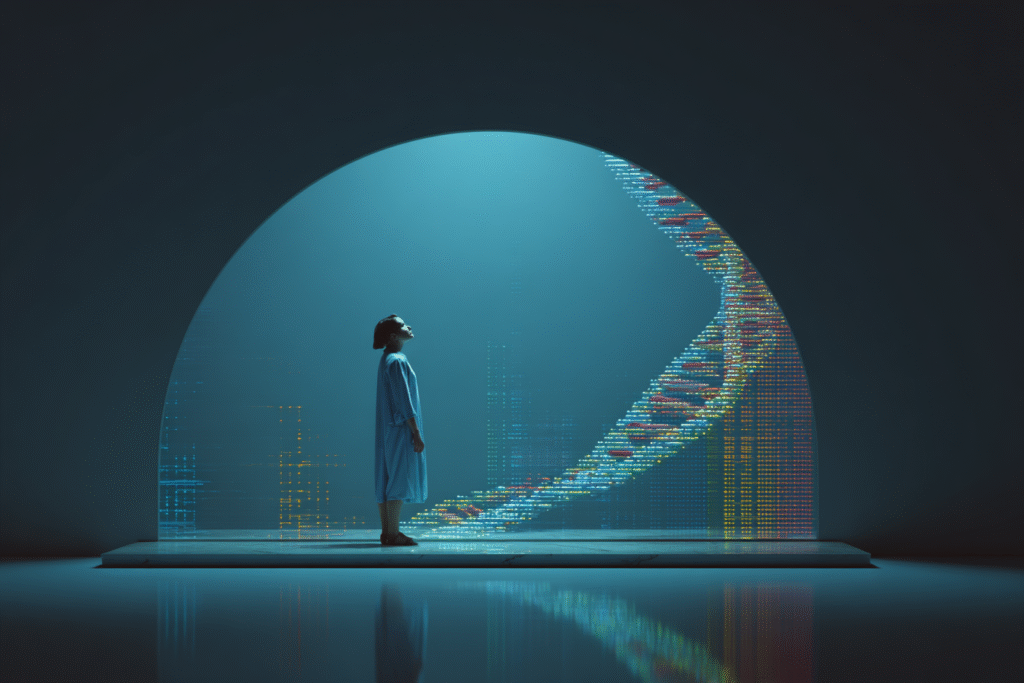
The Future Is Already Here
We’re living through an unprecedented moment. For the first time in human history, we can measure biological aging with precision, predict individual responses to interventions, and track improvements in real-time. The tools that cost millions just five years ago are becoming accessible to anyone curious enough to explore them.
But the real revolution isn’t in the technology—it’s in the shift from accepting aging as inevitable to approaching it as a solvable problem. Every data point collected, every pattern recognized, every intervention tested adds to humanity’s collective understanding of aging. We’re not just extending lifespan; we’re debugging the human operating system.
The question isn’t whether AI will transform longevity—it already has. The question is whether you’ll participate in this transformation as an active player or a passive observer. Your biological clock is ticking, but for the first time, you can hear it clearly. And increasingly, you can choose how fast it runs.
See you in the next insight.
Comprehensive Medical Disclaimer: The insights, frameworks, and recommendations shared in this article are for educational and informational purposes only. They represent a synthesis of research, technology applications, and personal optimization strategies, not medical advice. Individual health needs vary significantly, and what works for one person may not be appropriate for another. Always consult with qualified healthcare professionals before making any significant changes to your lifestyle, nutrition, exercise routine, supplement regimen, or medical treatments. This content does not replace professional medical diagnosis, treatment, or care. If you have specific health concerns or conditions, seek guidance from licensed healthcare practitioners familiar with your individual circumstances.
References
The references below are organized by study type. Peer-reviewed research provides the primary evidence base, while systematic reviews synthesize findings.
Peer-Reviewed / Academic Sources
- [1] St. Jude Children’s Research Hospital. (2024). The ticking ‘epigenetic’ clock measures true biological age. St. Jude Research. https://www.stjude.org/research/progress/2024/ticking-epigenetic-clock-measures-true-biological-age.html
- [2] Brigham and Women’s Hospital. (2024). New epigenetic clocks reinvent how we measure age. ScienceDaily. https://www.sciencedaily.com/releases/2024/02/240214203341.htm
- [3] Koncevičius, K., et al. (2024). Epigenetic age oscillates during the day. Aging Cell. https://onlinelibrary.wiley.com/doi/10.1111/acel.14170
- [4] NPR. (2024). How do biological age tests work and are they accurate or helpful? NPR Health Shots. https://www.npr.org/sections/health-shots/2024/02/05/1228753141/biological-age-test-dna
- [5] National University of Singapore. (2025). Transforming longevity research: AI paves the way for personalized treatments in aging science. ScienceDaily. https://www.sciencedaily.com/releases/2025/01/250127215315.htm
- [6] SciTechDaily. (2025). Transforming Longevity Research: AI Paves the Way for Personalized Anti-Aging Treatments. SciTechDaily. https://scitechdaily.com/transforming-longevity-research-ai-paves-the-way-for-personalized-anti-aging-treatments/
- [7] Aging-US. (2024). How AI and Longevity Biotechnology are Revolutionizing Healthcare for Healthier, Longer Lives. Aging-US Research. https://aging-us.org/2024/11/how-ai-and-longevity-biotechnology-are-revolutionizing-healthcare-for-healthier-longer-lives/
Government / Institutional Sources
- [8] FDA. (2024). FDA Clears First Over-the-Counter Continuous Glucose Monitor. FDA. https://www.fda.gov/news-events/press-announcements/fda-clears-first-over-counter-continuous-glucose-monitor
- [9] PMC. (2019). Continuous Glucose Monitoring Sensors for Diabetes Management: A Review of Technologies and Applications. PMC. https://pmc.ncbi.nlm.nih.gov/articles/PMC6712232/
Industry / Technology Sources
- [10] My Aging Tests. (2024). Epigenetic Age Test – GrimAge. My Aging Tests. https://myagingtests.com/product/epigenetic-age-grimage-test/
- [11] TRENDS Research & Advisory. (2024). AI and Longevity: Can Artificial Intelligence Help Humans Live Longer? TRENDS Research. https://trendsresearch.org/insight/ai-and-longevity-can-artificial-intelligence-help-humans-live-longer/
- [12] ScienceDirect. (2024). Wearable devices for glucose monitoring: A review of state-of-the-art technologies and emerging trends. Alexandria Engineering Journal. https://www.sciencedirect.com/science/article/pii/S1110016824000231
- [13] Dexcom. (2024). Stelo Wearable Glucose Biosensor. Stelo by Dexcom. https://www.stelo.com/en-us
